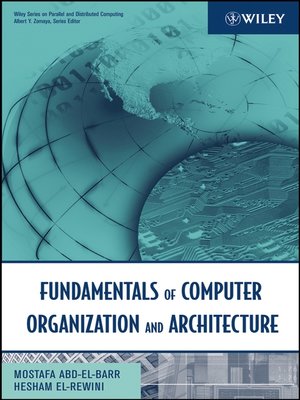

- Computer organization and architecture solutions code#
- Computer organization and architecture solutions simulator#
The following technologies are used in bigger companies like Intel, and were estimated in 2002 to count for 1% of all of computer architecture: There are other technologies in computer architecture.
Computer organization and architecture solutions code#

The discipline of computer architecture has three main subcategories:
Computer organization and architecture solutions simulator#
Later, computer architecture prototypes were physically built in the form of a transistor–transistor logic (TTL) computer-such as the prototypes of the 6800 and the PA-RISC-tested, and tweaked, before committing to the final hardware form.Īs of the 1990s, new computer architectures are typically "built", tested, and tweaked-inside some other computer architecture in a computer architecture simulator or inside a FPGA as a soft microprocessor or both-before committing to the final hardware form.

The earliest computer architectures were designed on paper and then directly built into the final hardware form. Later, computer users came to use the term in many less explicit ways. Subsequently, Brooks, a Stretch designer, opened Chapter 2 of a book called Planning a Computer System: Project Stretch by stating, “Computer architecture, like other architecture, is the art of determining the needs of the user of a structure and then designing to meet those needs as effectively as possible within economic and technological constraints.” īrooks went on to help develop the IBM System/360 (now called the IBM zSeries) line of computers, in which “architecture” became a noun defining “what the user needs to know”. To describe the level of detail for discussing the luxuriously embellished computer, he noted that his description of formats, instruction types, hardware parameters, and speed enhancements were at the level of “system architecture”, a term that seemed more useful than “machine organization”. Johnson had the opportunity to write a proprietary research communication about the Stretch, an IBM-developed supercomputer for Los Alamos National Laboratory (at the time known as Los Alamos Scientific Laboratory). Brooks, Jr., members of the Machine Organization department in IBM's main research center in 1959. The term “architecture” in computer literature can be traced to the work of Lyle R.


 0 kommentar(er)
0 kommentar(er)
